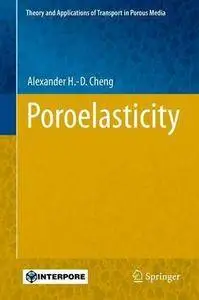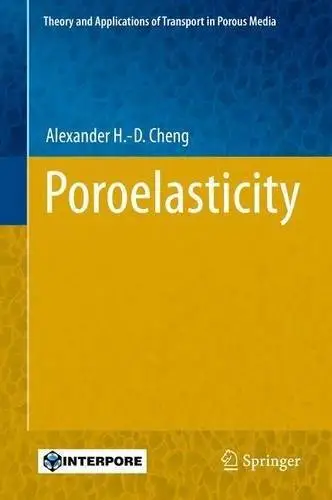Poroelasticity
Springer | Mechanics | May 21, 2016 | ISBN-10: 3319252003 | 877 pages | pdf | 15.19 mb
Springer | Mechanics | May 21, 2016 | ISBN-10: 3319252003 | 877 pages | pdf | 15.19 mb
Authors: Cheng, Alexander H.-D.
Presentation of the theory from both the intuitive physical arguments and the rigorous thermodynamics principles
A complete coverage ranging from the quasi-static theory, to the dynamic, viscoelastic, thermoelastic, and chemical effects
A comprehensive review of the related physical phenomena found in geophysics, geomechanics, soil and rock mechanics, petroleum engineering, and biomechanics
A near complete collection of closed form analytical solutions
A collection of biography of pioneers of the field
This book treats the mechanics of porous materials infiltrated with a fluid (poromechanics), focussing on its linear theory (poroelasticity). Porous materials from inanimate bodies such as sand, soil and rock, living bodies such as plant tissue, animal flesh, or man-made materials can look very different due to their different origins, but as readers will see, the underlying physical principles governing their mechanical behaviors can be the same, making this work relevant not only to engineers but also to scientists across other scientific disciplines.
Readers will find discussions of physical phenomena including soil consolidation, land subsidence, slope stability, borehole failure, hydraulic fracturing, water wave and seabed interaction, earthquake aftershock, fluid injection induced seismicity and heat induced pore pressure spalling as well as discussions of seismoelectric and seismoelectromagnetic effects. The work also explores the biomechanics of cartilage, bone and blood vessels.
Chapters present theory using an intuitive, phenomenological approach at the bulk continuum level, and a thermodynamics-based variational energy approach at the micromechanical level. The physical mechanisms covered extend from the quasi-static theory of poroelasticity to poroelastodynamics, poroviscoelasticity, porothermoelasticity, and porochemoelasticity. Closed form analytical solutions are derived in details.
This book provides an excellent introduction to linear poroelasticity and is especially relevant to those involved in civil engineering, petroleum and reservoir engineering, rock mechanics, hydrology, geophysics, and biomechanics.
Number of Illustrations and Tables
109 b/w illustrations, 62 illustrations in colour
Topics
Continuum Mechanics and Mechanics of Materials
Geotechnical Engineering & Applied Earth Sciences
Fossil Fuels (incl. Carbon Capture)
Geoengineering, Foundations, Hydraulics
Click Here to Buy the Hardcover from Springer
Click Here for More books



